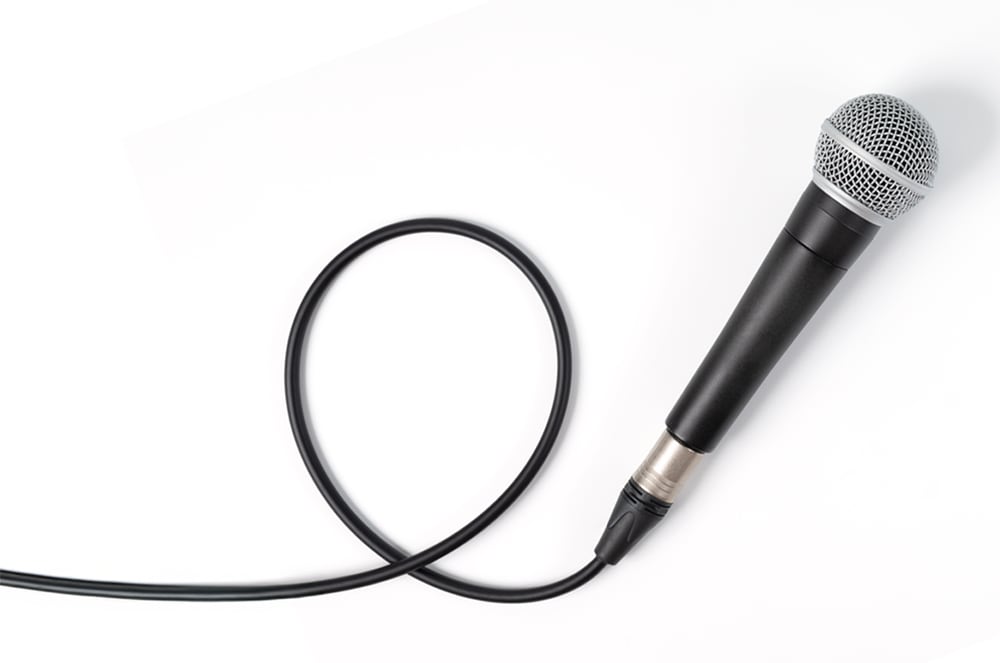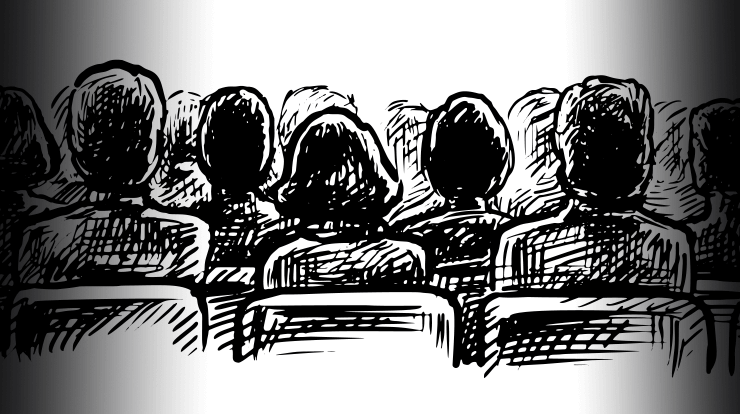
In many ways, speeches are like movies. Exciting movies begin with a thrilling scene, just as effective speeches start with a compelling hook. Audiences walk away from a film thinking about the ending, much like they do when a speaker concludes by reinforcing the key takeaway.
But what about the content-heavy middle of a presentation? It doesn’t have the luxury of an intriguing opening or thought-provoking ending to support and sustain audience interest.
Fortunately, just like in movies, a little editing can help an audience stay engaged or, if necessary, re-engage. You can get and hold their attention with two key tactics: 1) Break up patterns of potentially numbing sameness; 2) Keep things simple.
Breaking the Pattern
“Just as we normally tune out the feel of our shirt, the gentle hum of a ceiling fan, and the comforting scent of our morning coffee, we tune out speakers who become too predictable,” Brad Phillips, CEO at Throughline Group, a public speaking and media training firm, notes in a post on his company’s website. “[But] just as we evolved the capacity to tune out static, we developed a keen ability to detect change and movement in the environment.”
“Think of studying in a hushed library when your focus is abruptly diverted by a man’s loud voice cutting through the air … When the established ‘pattern’ ends, we take note. And if we, as presenters, regularly break our patterns, we can go a long way toward helping our audiences remain interested and absorb our information,” Phillips adds.
To prevent your audience from getting overwhelmed or confused, keep simplicity, conciseness, and focus in mind.
Sprinkle a few of the following pattern breaks into your presentation to keep the audience alert and primed for incoming points.
- Ask open-ended questions.
- Present a relevant and riveting story or case study.
- Show a visually stunning slide—or a completely blank one—to illustrate a point.
- Share a personal anecdote.
- Make a relevant joke.
- Vary your voice, volume, or pitch.
- Incorporate breakout discussions, exercises, or polls in a virtual meeting.
- Speak to different sections of the audience or walk to a different part of the room.
- Play a short video or audio file.
- Demonstrate a prop or object.
- Write or draw on a whiteboard or easel.
- Highlight a response posted in a virtual meeting chat.
Keep It Simple
Sometimes, the middle of a speech loses its stickiness because the information is too complex. To prevent your audience from getting overwhelmed or confused, keep simplicity, conciseness, and sharp focus in mind.
“As the expert, you should not attempt to tell [audiences] everything you know. Rather, you should ask the question, ‘What is most helpful for this audience to know’ and then share only that information,” presentation coach Brian Krogh, who works with many biotech and pharmacological clients, advises in a 2024 article.

Simplicity is especially important on visual slides. You can make those slide points more quickly comprehensible by:
- Using simple language and references a layperson can comprehend
- Limiting the amount of data you present on each slide (even if this means creating more slides)
- Emphasizing a single point on each slide (which gives your audience time to process it)
- Writing slide titles featuring points or headlines (which reinforces your points), not merely topics or content categories
Michael Alley, who teaches engineering communication at Pennsylvania State University and wrote The Craft of Scientific Presentations, developed what is called the assertion-evidence approach to keep audiences attentive during slide-heavy scientific research presentations. It involves using a one-sentence assertion at the top of each slide, with visual evidence below it, such as charts, photographs, or videos.
This “assertion-evidence” approach is a good guide for keeping the middle slides more focused and memorable in any presentation.
You’re now at the end of this article, but take a moment to review its middle. Did the bullets, subheads, short paragraphs, and expert quotes break up what could have otherwise been a numbing wall of words?
If you agree that it did, then you know how to prevent your entire speech from getting muddy in the middle.
Joel Schwartzberg is a presentation coach, executive communication specialist, and author of The Language of Leadership: How to Engage and Inspire Your Team and Get to the Point! Sharpen, Simplify, and Sell Your Message. Follow him on LinkedIn.
Related Articles

Language
My Point Is This ...

Speechwriting
Build a Great Speech

Audience



 Previous
Previous

 Previous Article
Previous Article